25+ SAMPLE Daily Construction Report
-
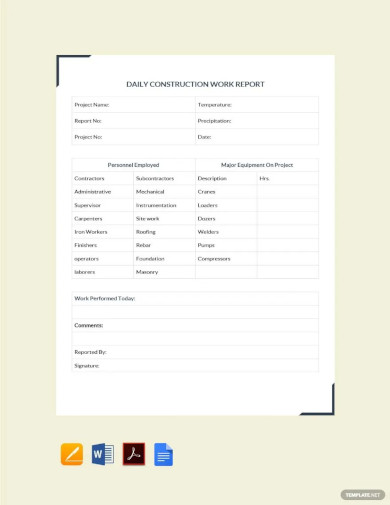
Daily Construction Work Report
download now -
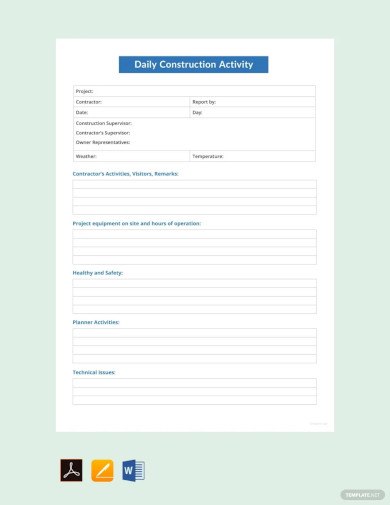
Daily Construction Activity Report
download now -

Construction Daily Inspection Report
download now -
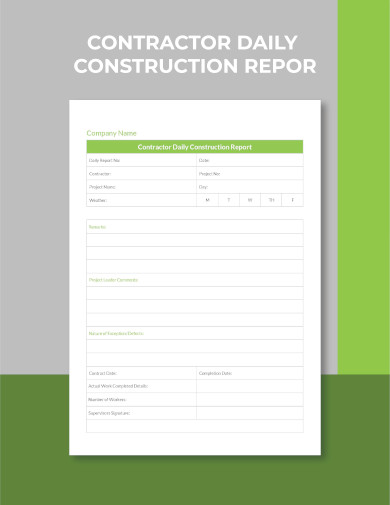
Contractor Daily Construction Report
download now -
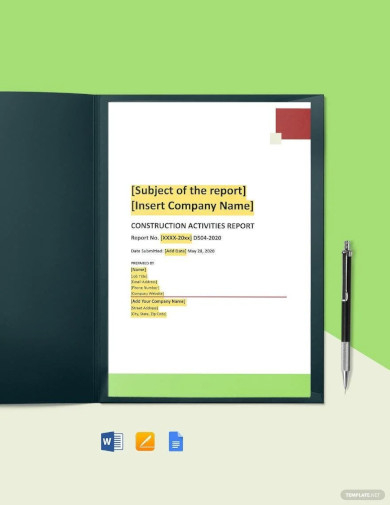
Daily Construction Activities Report
download now -
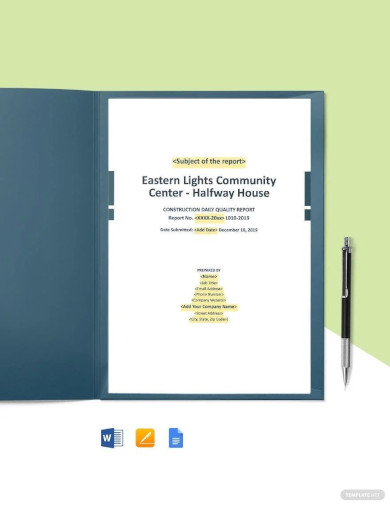
Construction Daily Quality Report
download now -
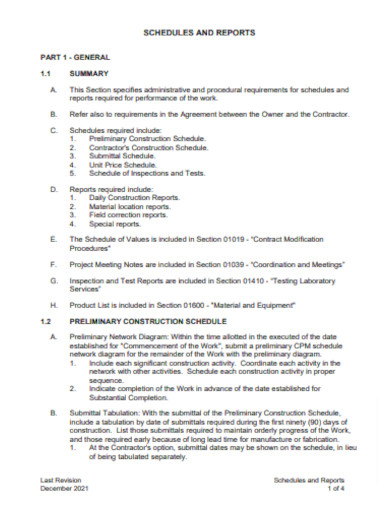
Daily Construction Schedule Report
download now -

Contractor Daily Construction Report
download now -
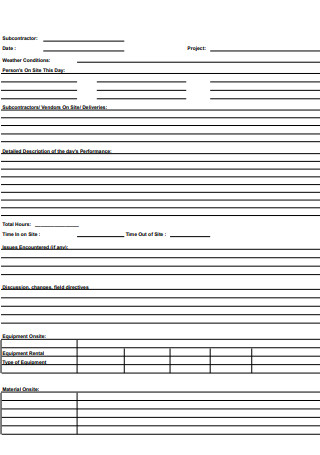
Subcontractor Construction Daily Report
download now -
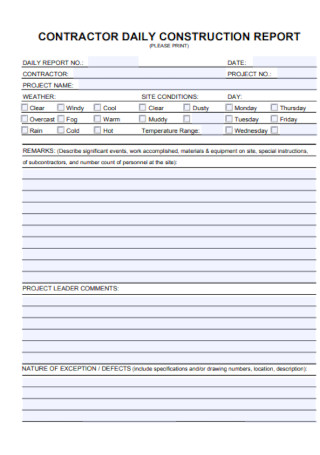
Daily Construction Report
download now -
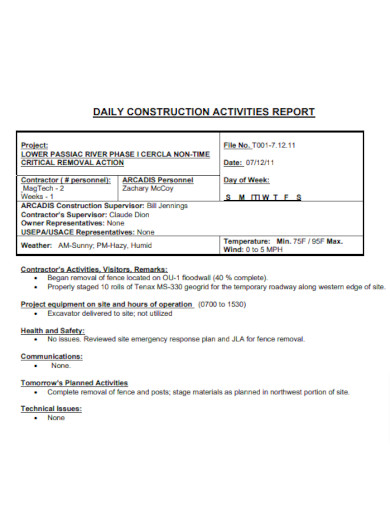
Sample Daily Construction Activities Report
download now -
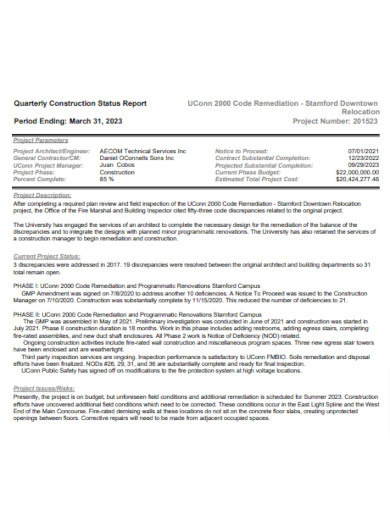
General Contractor Daily Construction Report
download now -
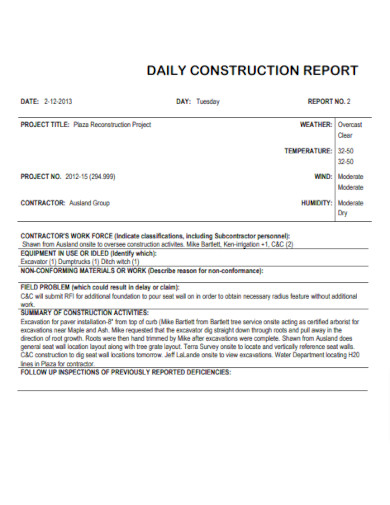
Simple Daily Construction Report
download now -
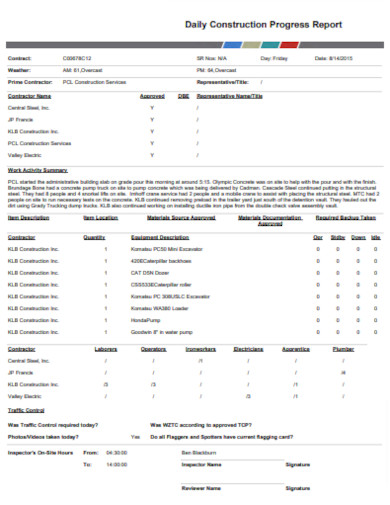
Daily Construction Progress Report
download now -
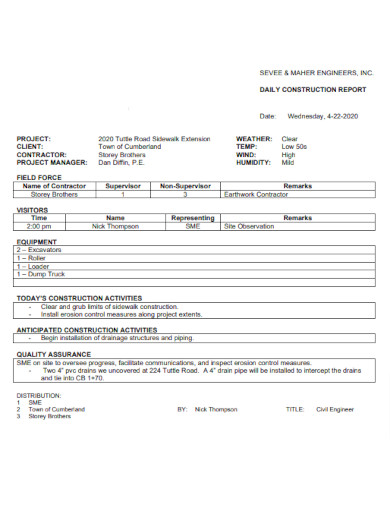
Basic Daily Construction Report
download now -
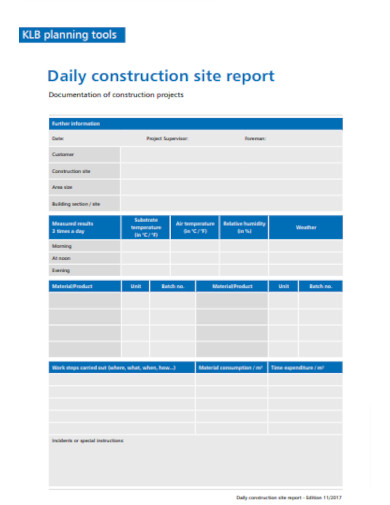
Daily Construction Site Report
download now -
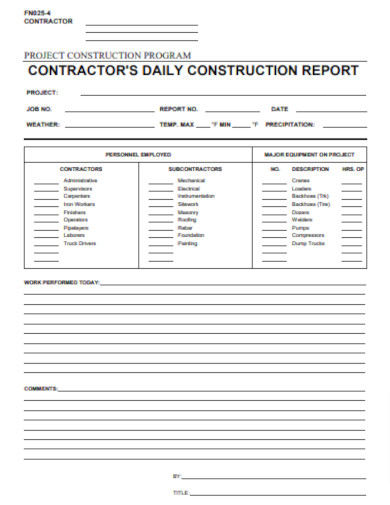
Daily Project Construction Report
download now -
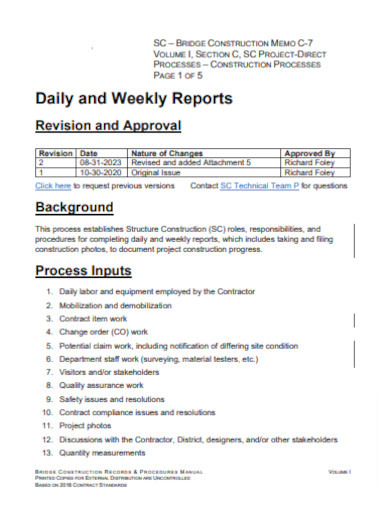
Daily Construction Weekly Report
download now -
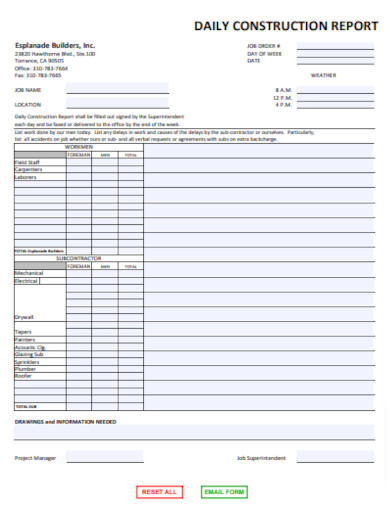
Daily Construction Report Outline
download now -
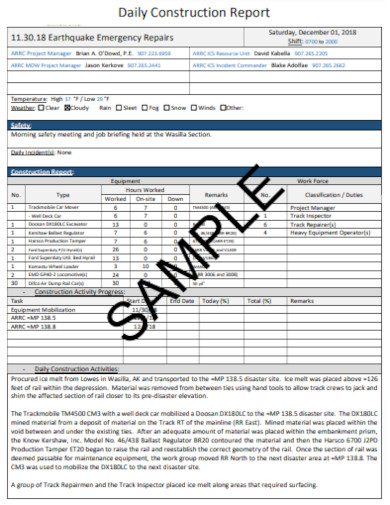
Daily Construction Report Format
download now -
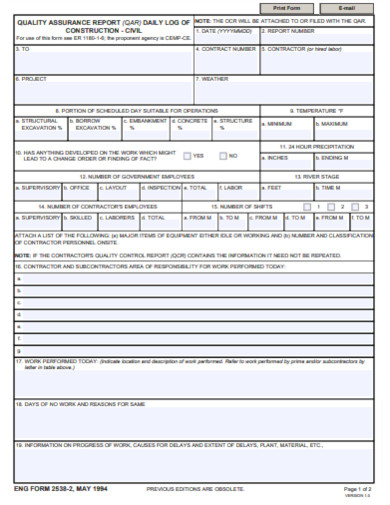
Daily Construction Assurance Report
download now -
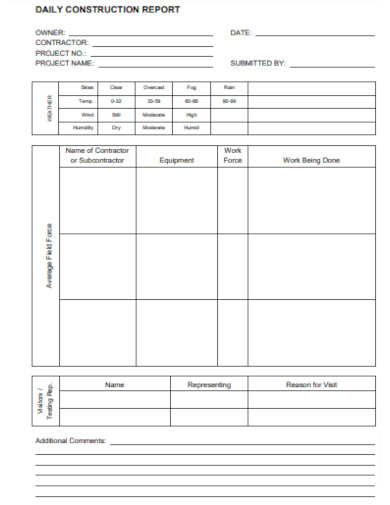
Daily Construction Inspection Report
download now -
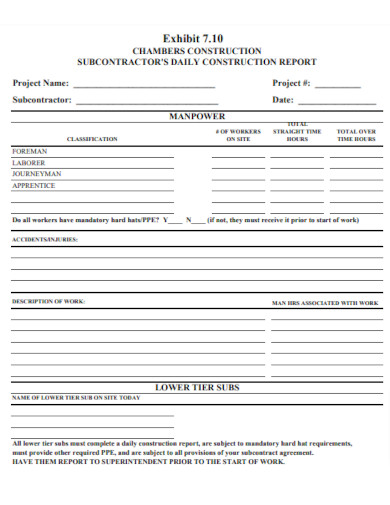
Daily Construction Private Report
download now -
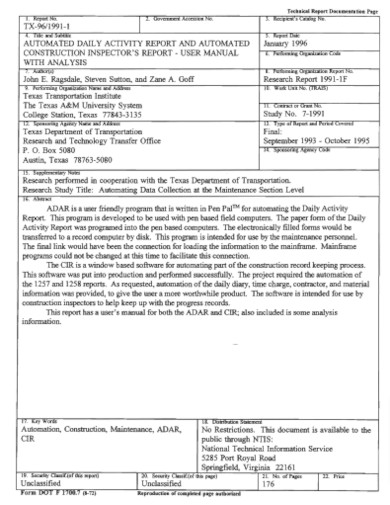
Daily Construction Report Layout
download now -
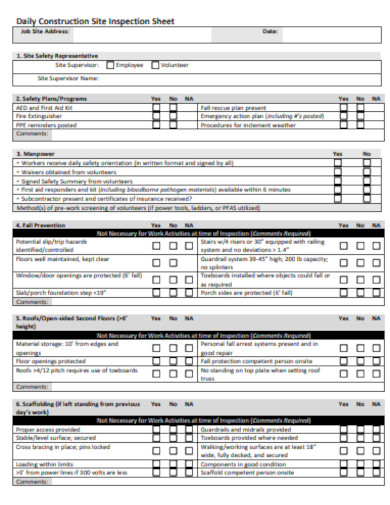
Daily Construction Jobsite Inspection Report
download now
FREE Daily Construction Report s to Download
25+ SAMPLE Daily Construction Report
What is a Daily Construction Report?
Key Components of a Daily Construction Report:
Challenges in Maintaining a DCR:
Tips for an Effective DCR
FAQ’S
Why is a DCR important for construction projects?
Who is responsible for filling out the DCR?
How often should a DCR be completed?
Can technology aid in the creation of DCRs?
Is visual documentation, like photographs, necessary for a DCR?
What is a Daily Construction Report?
A Daily Construction Report (DCR) is a formal document that records the day-to-day happenings on a construction site. This includes details about the workforce, the tasks undertaken, the equipment used, weather conditions, safety incidents, and more. It offers a snapshot of a particular day’s activities, providing stakeholders with insights and updates.
A Daily Construction Report (DCR) plays a fundamental role in managing and documenting the myriad activities that take place on a construction site each day. Here’s a deeper dive into why a DCR is so crucial:
Transparency and Accountability:
Detail: The DCR serves as a daily record of site activities, ensuring that every task, however small, is documented. This meticulous record-keeping ensures that all stakeholders, from workers to project managers to clients, remain informed about daily progress.
Benefit: This fosters transparency across the board and holds teams accountable for their responsibilities, ensuring there’s clarity on what was achieved each day.
Resource Management:
Detail: The report documents materials used, equipment operated, and workforce attendance, helping monitor resource allocation and consumption closely.
Benefit: This promotes efficient use of resources, helps in early identification of potential wastage or shortages, and aids in better planning and procurement strategies.
Safety and Compliance:
Detail: All safety incidents, even minor ones, are documented in the DCR. This includes not just the incident itself but also the immediate actions taken and follow-up required.
Benefit: This ensures that the project remains compliant with safety regulations, allows for prompt investigations, and emphasizes a safety-first culture on the construction site.
Dispute Resolution:
Detail: Disagreements or conflicts about work done, resources used, or incidents on-site are not uncommon in construction projects. The DCR provides a factual account of events and actions.
Benefit: Having a written, verified record helps resolve disputes more efficiently and can serve as evidence if needed.
Progress Tracking:
Detail: The DCR provides daily insights into the project’s progress against the planned schedule. By comparing daily outcomes with planned milestones, managers can gauge if the project is on track.
Benefit: This assists in proactive decision-making. If delays are identified early, corrective actions can be initiated to get the project back on track.
Improved Communication:
Detail: The DCR serves as a consistent communication tool, updating stakeholders on the day’s events and progress. Whether it’s team members on-site, contractors, clients, or investors, everyone remains informed.
Benefit: Enhanced communication fosters collaboration, builds trust, and ensures everyone is aligned with project goals and challenges.
Record Keeping and Documentation:
Detail: Beyond its immediate uses, the DCR is an official record of the project. This archive can be invaluable for future projects, audits, or any post-project analysis.
Benefit: Historical records help in refining processes, training new staff, and providing insights for future projects.
In essence, the Daily Construction Report, while seemingly routine, is a pivotal tool that encapsulates the pulse of a construction project. It ensures informed decision-making, efficient resource utilization, and promotes a culture of transparency and accountability on-site.
Key Components of a Daily Construction Report:
A Daily Construction Report (DCR) is a comprehensive document detailing the day’s activities on a construction site. Let’s delve into its essential components, which serve to provide a holistic view of daily operations, progress, and challenges:
Date and Project Details:
Information: This includes the specific date of the report and pertinent details about the project, such as its name, location, project number, and possibly even the phase or milestone the project is in.
Workforce Details:
Information: This section captures the number of workers present on-site, hours worked, details about any absenteeism, and possibly details about specific teams or subcontractors and their respective activities.
Work Completed:
Information: A detailed description of tasks or activities completed on that particular day. This can range from pouring concrete for a foundation to installing window frames.
Materials Used and Delivered:
Information: This covers the materials consumed on that day and any new materials or equipment that have been delivered to the site. It may also highlight any discrepancies between ordered and delivered quantities.
Equipment Log:
Information: Details about the equipment utilized during the day. This includes the type of equipment, hours of operation, any maintenance activities undertaken, and if any equipment faced issues or breakdowns.
Weather Conditions:
Information: A note on the day’s weather conditions, especially if they had an impact on construction activities. For instance, heavy rainfall might delay certain outdoor tasks.
Safety Incidents and Observations:
Information: A record of any safety incidents, no matter how minor. This should cover the nature of the incident, individuals involved, actions taken in response, and any recommendations or follow-ups required to prevent recurrence.
Notes and Observations:
Information: General comments or observations from the site supervisor or project manager. This might include notes on workforce performance, interactions with stakeholders, or any unplanned challenges faced.
Photographs:
Information: Visual documentation can be invaluable. Photographs offer a clear depiction of progress, any incidents, or specific events that took place. This adds another layer of transparency and verification to the report.
Visitors Log:
Information: Details of any visitors to the site, be it clients, inspectors, or other stakeholders. This ensures a record of all individuals who entered the site and the purpose of their visit.
Sign-off:
Information: A verification section where the site supervisor or project manager signs or initials, confirming the accuracy and completeness of the report. This authentication serves as a testament to the report’s veracity.
Follow-ups or Action Items:
Information: Any tasks or actions that need to be addressed based on the day’s observations or incidents. This can be a tool for proactive management and ensures that any challenges or issues are promptly addressed.
The above components, when diligently recorded, offer a comprehensive daily snapshot of a construction site’s activities, challenges, and progress. Such detailed documentation is pivotal for effective project management, communication, and accountability.
Challenges in Maintaining a DCR:
Maintaining a Daily Construction Report (DCR) is of utmost importance for ensuring smooth project management in construction; however, this process does not come without its challenges. Here are some common hurdles faced in the consistent and accurate creation of DCRs:
Time Constraints:
Detail: Given the fast-paced nature of construction sites, setting aside time daily to meticulously fill out a report can be challenging, especially on particularly hectic days.
Accuracy and Completeness:
Detail: Human error or oversight can lead to omissions or inaccuracies in the DCR, whether it’s missing out on a minor task completed or inaccurately recording materials used.
Reliance on Multiple Sources:
Detail: A DCR often requires input from various personnel on-site, including different subcontractors or team leaders. Collecting consistent and comprehensive information from multiple sources can be a logistical challenge.
Resistance to Documentation:
Detail: Not everyone recognizes the value of daily reporting. Some team members may view it as tedious paperwork, leading to reluctance in providing detailed or prompt information.
Technology Limitations:
Detail: While many modern sites utilize construction management software for DCRs, technological issues, software glitches, or inadequate training can hinder the reporting process.
Environmental Factors:
Detail: Adverse weather conditions, such as heavy rain or extreme temperatures, can disrupt the process of recording daily activities, especially if it requires on-site inspections or discussions.
Communication Barriers:
Detail: Miscommunication or lack of effective communication channels between different teams or departments can lead to incomplete or disjointed reporting.
Consistency in Format:
Detail: Different team leaders or managers might have varying formats or criteria for what they consider important, leading to inconsistency in reports.
Data Overload:
Detail: Striking a balance between being comprehensive and being concise can be tricky. Overloading a DCR with excessive details can make it cumbersome and less user-friendly.
Storage and Retrieval:
Detail: Storing physical copies of DCRs can lead to challenges in organizing, storing, and retrieving them for future reference. Digital storage, on the other hand, requires systematic backups and cybersecurity measures.
Despite these challenges, the value of a DCR in ensuring transparency, communication, and effective project management cannot be overstated. By acknowledging these hurdles and implementing proactive measures, such as training, leveraging technology, and streamlining communication channels, construction teams can maintain DCRs effectively, ensuring the seamless progression of projects.
Tips for an Effective DCR
Ensuring an effective Daily Construction Report (DCR) is crucial for capturing an accurate snapshot of a construction site’s daily activities, challenges, and progress. Here are some actionable tips to enhance the quality and utility of DCRs:
Use Standardized Templates:
Benefit: Ensures consistency in report structure, making it easier to review and compare day-to-day entries.
Tip: Create or utilize industry-standard templates that cover all essential components.
Leverage Technology:
Benefit: Streamlines the reporting process and minimizes human errors.
Tip: Use construction management software or mobile apps designed for DCRs. These often come with features like auto-fill, cloud storage, and real-time updates.
Train the Team:
Benefit: Ensures that everyone involved understands the importance and process of DCR documentation.
Tip: Conduct regular training sessions to familiarize the team with DCR procedures, formats, and software.
Incorporate Visual Documentation:
Benefit: Photos and videos can offer a clear, visual record of the day’s progress, incidents, or specific events.
Tip: Equip site supervisors with cameras or smartphones and make it a routine to capture relevant site visuals.
Encourage Timely Entries:
Benefit: Reduces the chance of forgetting details or inaccuracies due to delays in reporting.
Tip: Make it a practice to fill out the DCR at the end of the workday or as notable events unfold.
Designate a DCR Point Person:
Benefit: Having a designated individual ensures accountability and consistent report quality.
Tip: Assign a responsible site supervisor or manager to oversee and verify DCR entries.
Ensure Clear Communication Channels:
Benefit: Facilitates efficient information gathering from multiple sources on-site.
Tip: Set up routine end-of-day briefings or check-ins with team leaders and subcontractors.
Keep it Concise:
Benefit: While thoroughness is essential, overloading the DCR with unnecessary details can make it cumbersome.
Tip: Stick to relevant facts and details, ensuring clarity and readability.
Regularly Review and Audit:
Benefit: Periodic reviews ensure the consistency and accuracy of reports, allowing for corrections or improvements.
Tip: Establish a weekly or bi-weekly review process involving project managers or other stakeholders.
Maintain a Backup:
Benefit: Ensures data safety and availability, even if physical copies are lost or digital files get corrupted.
Tip: If using physical documentation, keep duplicates in a safe location. For digital reports, ensure cloud backups or store on external hard drives.
FAQ’S
Why is a DCR important for construction projects?
DCRs provide a clear snapshot of daily operations, helping in tracking progress, identifying issues early on, ensuring safety compliance, and facilitating communication between stakeholders.
Who is responsible for filling out the DCR?
Typically, a site supervisor, project manager, or designated on-site personnel is responsible for compiling and authenticating the DCR.
How often should a DCR be completed?
As the name suggests, a DCR is a daily report and should be completed at the end of each working day.
Can technology aid in the creation of DCRs?
Yes, numerous construction management software and apps streamline the DCR process, offer standardized templates, and allow for real-time updates and cloud storage.
Is visual documentation, like photographs, necessary for a DCR?
While not always mandatory, visual documentation like photographs can enhance the clarity and accuracy of a DCR, providing a tangible record of site conditions, progress, or any incidents.
In the fast-paced world of construction, the Daily Construction Report (DCR) stands as an indispensable tool, acting as both a record and a reflection of daily operations. By meticulously capturing the nuances of a construction site—whether it’s the work completed, materials used, or any unforeseen challenges—the DCR provides stakeholders with a transparent snapshot of progress.
